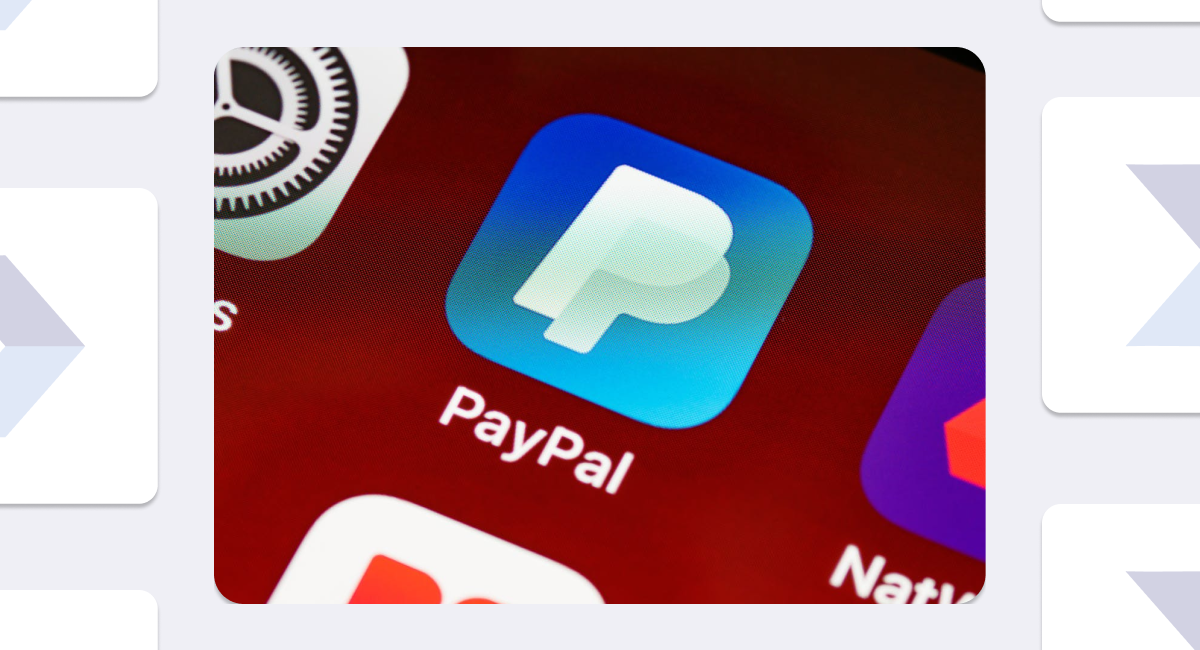In business, it’s all about cash flow — customers pay their bills, and the company can buy materials, fund employees’ salaries, cover the rent and utilities, etc. Because this influx of money is vital, how a company understands and applies invoice payment terms is also important to keep moving flowing into the business.
Your accounts receivable department is the key to keeping cash flowing into your business and fortifying your company’s financial health. Of course, that task requires more than just an invoice. Using tools like our cash flow forecasting helps you identify recurring and potentially problematic patterns in your accounts receivable cycles.
Before implementing any new AR/AP software, you should get to know invoice payment terms that make invoicing more effective. After that, brush up on tried-and-true tips to help you manage and sustain your cash flow. We’ve got you covered with seven of each.
Invoice payment terms to know
Knowing the following terms will help you understand and optimize your accounts receivable processes.
Quote or estimate
For starters, a customer might come to you without an inquiry before they’re ready to place an order. They’ll ask you how much a particular product or service will cost, even if they don’t intend to buy it right then. You can print out a quote or estimate so that they can compare your services and pricing with other potential companies’ costs.
Of course, the quote won’t be binding, but it should contain the following:
Payments: Figure out accepted payment methods.
Delivery schedule: How long will it take you to finish the job?
Potential variations: How the price could change in common scenarios. For instance, a landscaping service might show an additional charge for the removal of grass clippings.
Payment terms and conditions: Will you collect a lump sum, monthly payments, half now and half later or take payment another way?
Quote expiration date: All good things must come to an end, and the deal on an offer probably won’t last forever.
Even if your price isn’t the lowest, this information might inspire the customer to choose you and your clearly defined terms. In fact, sometimes a higher price can drum up interest in the quality and speed of your service, so don’t undercut value for the sake of a quote.
Payment in advance (PIA)
Those in creative sectors (and almost any service industry) should familiarize themselves with the concept of payment in advance (PIA) quickly, as this is a foundational part of service-based invoices.
For example, take a graphic designer with a huge corporate project on the books. Rather than diving right into her design process, she’ll make sure she has a guarantee from the contracting company to ensure they will pay her full bill down the line. So, she uses a PIA, normally 50% of the project’s total cost, to give her the security she needs to get started.
Advances are important to businesses in all fields, though, so you might want to include one on an invoice, especially if you’re working with a new client. PIAs give you the chance to buy raw materials or cover any other expenses that would come out of your account so that you can complete the commissioned project – without fronting the entire cost on your bottom line.
Net 7, 10, 30, 90, etc.
When you see “Net” followed by a number on an invoice, it means the seller expects the net payment to be received within that X-day timeframe. So, for example, if a bill sent on August 1 reads “Net 7,” the money should arrive no later than August 8. In most cases, though, it’s considered courteous to give customers at least 21 days to send the money.
Even though the “Net” system is common among proprietors, those who receive the bill might not be as keen to the meaning of it. To make the invoice’s terms crystal clear, you can write something like, “Please make payment within X days.” When it comes to getting paid, there’s no room for being vague.
X/Y Net Z (benefits for early payment)
This one might seem tricky, but it’s actually quite simple once the letters are replaced with numbers. Let’s say, for instance, that the equation said, “3/10 Net 30.” In this case, X or 3 represents a discount percentage that’s up for grabs. Y or 10 is the number of days in which a client has to pay to receive said discount. So, if they pay within 10 days, they get 3% off of their total bill.
Otherwise, the customer can pay the full amount within 30, or Z days. You can sweeten this deal, of course, or make the repayment window shorter. Again, spelling out the discount’s terms makes it simpler for customers to take advantage of the opportunity, regardless of their familiarity with invoicing terms. “Please pay within 10 days for a 3% discount” should do the trick.
Immediate payment or payable on receipt
Not every invoice will give customers an extended period to pay their bills. In many cases, a bill might say, “Immediate payment applies to goods or intellectual property sold.” If the money isn’t presented at the time of sale, then you have the right to take back your property from the person on the other end of the deal.
Obviously, this system is excellent for you, as it ensures cash flow as soon as you complete a sale. However, it’s not always a client’s ideal, as they have to produce the cash to pay for the products or services they want.
Line of credit pay
If you’re invoicing for a larger company, you might have the luxury of giving your clients the opportunity to pay through a line of credit. With this system, they can hand over cash installments within a designated timeframe — perhaps, for example, they’ll pay a portion monthly or quarterly until they’ve paid off their bill. For smaller or newer companies, this can be a risk, especially at a time when cash flow is necessary to keep the operation chugging along.
Interest invoice
No matter how trustworthy a client may seem, they could still fail to pay a bill on time. For that reason, you should have a plan in place to penalize late payers. Many business owners decide to charge interest on a past-due bill, and, if you go down this route, you should be sure to designate that your invoice is for interest charges.
You’ll be charging interest on the number of days late a bill is. Imagine, for example, that your interest rate is 8%, and that a $2,000 bill is 30 days late. To calculate how much interest is owed, divide 30 by 365, the number of days in a year. 30/365 equals 0.082, which you’ll next multiply by the interest rate, 0.08. 0.082 x 0.08 equals 0.0066, which you’ll finally multiply by $2,000 to get your interest rate. The customer will owe you $13.20, which you’ll collect with a clearly marked interest invoice.
7 strategies to improve payment terms and boost profits
Now that you know about all the invoice payment terms, it’s time to apply that knowledge — in more ways than one because no one likes complex invoice processing. Here’s how to invoice properly and promptly so that you take advantage of your well-written bills and protect your cash flow.
Talk before you begin
You should always discuss and agree upon invoices with your clients before you send them an invoice. This process will help you steer clear of any confusion down the line. It’ll also prove that you conduct business in a trustworthy, transparent way, which has become an important selling point for companies who want to break free from the corporate norm or garner high rankings on customer review sites. Open communication will boost your customer service from start to finish.
Clear expectations and deadlines in writing
Make invoicing easy with these payment terms. Keep things simple, use abbreviations if the client understands them, and explain when needed. Being clear about when payments are due speeds up your money coming in. Avoid using unclear terms; instead, be exact about when payments are needed, like saying ‘Payment Due October 31, 2018.’ Being clear not only gets you paid faster but also sets expectations for a smoother financial process for your business.
Put technology on your side
If you’re running a small business, you probably don’t have an accounting department to take care of your invoices. That’s why it’s so important for you to learn the above tips as well as further invoicing etiquette for proprietors like you.
The top tip on that list recommends that you invest in trusted invoicing software so that you can focus on the areas of your business that need even more of your attention. These programs make all of the above more straightforward, from designing an eye-catching bill to sending them out promptly each month. If you’re getting your payments faster and without as much issue, it’s clearly worth the investment.
Send the invoice immediately
You most likely want to improve your invoices so that you get your well-deserved money as quickly as possible. It’s up to you to get the ball rolling though, so make sure your accounts receivable department is sending invoices swiftly.
This speed will also ensure the client remembers who you are and why they’re paying you. Just as we mentioned when suggesting the inclusion of a recognizable logo on your invoice, a customer is likely to hold off on a payment if they don’t know who’s billing them.
Charge for late payments
We already discussed the interest invoice and how you’d write one up to collect residuals on an outstanding bill. Before you can do that, though, you have to create a late-payment policy that penalizes tardiness. With that rule in place, you’re likely to see customers paying diligently to avoid additional charges.
To that end, advertise any early-payment incentives you’ve implemented too. The X/Y Net Z term described above can help with that, as can a more detailed explanation of this reward. You can conduct such a conversation in person, outline the conditions on your website or even reach out to customers with bills pending to try to hasten their payment with a discount.
Utilize payment automation
Payment automation simplifies payment processes for you and your customers. Your customers can easily settle their bills in just a few clicks. That means less stress for them and a consistent cash flow for your business. Automated payments ensure accuracy and reliability while giving your vendors various convenient ways to pay.
Make the payment process easy for customers
Utilize user-friendly modern payment solutions such as Forwardly for instant payments. Send payment requests to your customers through the platform, and the transaction will be processed in under 60 seconds. Make paying hassle-free for your customers!
With Forwardly, ease into effortless payments
Forwardly simplifies payment requests—your customers can pay with just a click. Offering affordable instant payments and free same-day ACH transfers, Forwardly speeds up your payment process. But that’s not all! It handles recurring payments seamlessly by offering automatic payments, taking the hassle away. Forwardly also syncs with your accounting software, automatically matching payments to invoices. Say goodbye to financial admin tasks and hello to streamlined operations.
And wait, there’s more! Forwardly offers a cash flow forecasting tool for small businesses with forecasting up to 12 months. No more crunching numbers; predict your finances in just minutes. Take control of your cash flow—switch to Forwardly today!
The information in this article is not financial advice and does not replace the expertise that comes from working with an accountant, bookkeeper or financial professional.
 Back to Blog
Back to Blog


